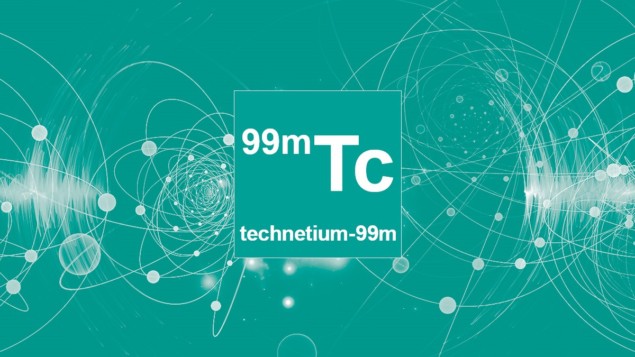Which is your favourite chemical element? To mark the International Year of the Periodic Table, our science journalists will be arguing for their pick from the 118 known elements. In this instalment, Tami Freeman highlights how technetium-99m helps to save lives before rapidly decaying away.

As the medical physics editor for Physics World, it seems apt that I should choose technetium as my favourite element — or more specifically, its metastable nuclear isomer technetium-99m (Tc-99m). Tc-99m is employed in tens of millions of medical diagnostic procedures per year — about 80% of all nuclear medicine procedures worldwide. As such, it is helping to save lives on a daily basis.
Tc-99m, the decay product of molybdenum-99 (Mo-99), is the perfect fit for medical imaging. It emits gamma rays with an energy of 140 keV, which can easily be detected using a standard gamma camera. A relatively short physical half-life of six hours, and a biological half-life of one day, makes Tc-99m ideal for use in procedures such as single-photon emission computed tomography (SPECT). Importantly, soon after the procedure ends, no radioactivity is left in the body.
One vital application, for example, is myocardial perfusion imaging, used to help diagnose heart disease. A Tc-99m-based radiopharmaceutical is injected into the patient and the gamma rays emitted from inside the body are used to create images of the heart muscle, with the patient at rest and during exercise. Comparing the resulting images (which, as an aside, I find highly reminiscent of the recently published first ever image of a black hole) enables doctors to assess blood flow through the patient’s heart.
And there are many, many other important procedures that employ Tc-99m — including whole-body imaging to detect bone metastases, sentinel node imaging before surgery for breast cancer or melanoma, as well as thyroid, brain, lung and renal imaging. Tc-99m certainly lives up to its reputation as the “workhorse isotope” of nuclear medicine.
Shifts in the supply chain
In terms of supply, however, Tc-99m has had a somewhat chequered past. To create Tc-99m, you first need to produce Mo-99, which has a half-life of 66 hours and is more easily transported to hospitals than its short-lived decay product. Mo-99 is traditionally generated via fission of uranium-235, achieved by neutron bombardment of uranium targets and performed in a limited number of nuclear reactors.
Around a decade ago, the nuclear medicine field experienced a large supply shortage caused by two of these ageing reactors being simultaneously shut down for extended periods. To address this vulnerability, governments and industry have since taken action to improve the reliability of the Mo-99/Tc-99m supply chain.
For instance, several countries have plans to develop new capabilities to produce Mo-99. Irradiation facilities and producers also have agreements in place for backup production and supply of Mo-99 in the event of scheduled (or unscheduled) shutdowns, making today’s market more reliable.
In addition, companies are developing alternative production methods that do not require uranium targets. One approach is to use neutron capture, in which the stable Mo-98 isotope captures a neutron and transmutes to Mo-99. Other approaches remove the need for a reactor completely, such as photon-induced transmutation of Mo-100 to Mo-99 using photons from electron accelerators.
The need for Tc-99m is clear, and all stakeholders are working hard to safeguard its supply. The most widely used medical radioisotope, Tc-99m looks set to continue making an invaluable and significant impact on the lives of patients across the globe.
Which is your favourite element? Contact us at pwld@ioppublishing.org with your pick – and the reason why – or via Twitter using the hashtag #battleofelements.



